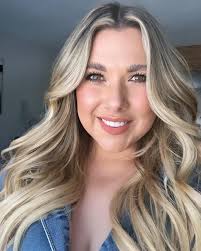Which Hair Extensions Last Longest? Salon Owner Shares All
Look, I get asked this question literally every single day: "Which extensions are actually going to last?" And honestly? It's complicated.
Because here's the thing, everyone wants that magic answer where I tell them exactly which method will give them the most bang for their buck. But the truth is, it depends on SO many factors. Your client's hair type, their lifestyle, how much they're willing to invest upfront, whether they actually follow aftercare instructions (spoiler alert: half of them don't).

But after years in this industry, I can definitely tell you which methods consistently perform better than others. And which ones are total money pits that'll have your clients back in your chair way sooner than anyone wants.
So let's break this down, method by method. Because whether you're trying to decide what to offer in your salon or you're a stylist who's tired of disappointed clients, you need the real information on extension longevity.
Which Hair Extensions Actually Last the Longest?
Okay, straight up, semi-permanent wefts are your best bet for longevity. I'm talking 9 to 12 months if you do them right. Machine wefts, hand-tied, genius wefts... these are the heavy hitters.
Now, are they more expensive upfront? Yes. Do they require more skill to install? Absolutely. But here's what the industry knows: clients who invest in quality semi-permanent extensions almost always become repeat customers. Because once they experience hair that actually lasts and looks natural, they're hooked.
The temporary stuff like clip-ins has its place, don't get me wrong. But if someone's asking me what lasts the longest? It's wefts, hands down.
How Long Do Machine Weft Extensions Last?
Machine wefts are basically the workhorses of the extension world. These can last almost a year with proper maintenance. Clients come in for touch-ups every 6 to 8 weeks, but the actual hair? Still going strong.
The construction is just... sturdy. Like, these things can handle whatever gets thrown at them. Hot tools, workouts, daily washing routines.
Machine wefts work amazing for clients with thicker hair who want serious volume. But here's something most people don't tell you: they're also great for fine hair if you know what you're doing with placement. The key is not overloading.
When machine wefts are installed correctly, they can handle significant styling and maintain their shape even with frequent heat use. That's why they're so popular for clients who want that full, voluminous look.
Actually, let me back up. When I say they last 9 to 12 months, I mean the actual hair extensions. The install itself needs maintenance every 6 to 8 weeks because natural hair grows. But that same weft hair keeps going and going.
Why Do Hand-Tied Weft Extensions Last So Long?
Hand-tied wefts are like... the elegant cousin of machine wefts. They last just as long, sometimes longer because they're so gentle on the natural hair.
The ultra-thin construction means they lay completely flat. No bumps, no visible lines, just seamless hair that moves naturally. Some clients can sleep in these and wake up with perfect hair. It's kind of unfair, honestly.
Hand-tied wefts are ideal for fine hair clients. The weight distribution is so even that there's zero stress on the hair follicles.
But here's where people mess up: they think because hand-tied wefts are gentler, they're somehow less durable. Wrong. These can last 10+ months and still look incredible when properly maintained.
The only downside? They're harder to install. You need steady hands and serious patience. But once you master the technique, these become a signature service.
What Makes Genius Weft Extensions Different?
Genius wefts are basically what happens when someone looked at machine wefts and hand-tied wefts and said "why can't we have both?"
They've got the durability of machine wefts but the comfort of hand-tied. Which sounds too good to be true, right? But the construction really does deliver on that promise.
The construction is innovative. It's this ultra-thin weft that somehow manages to be incredibly strong. These things just don't break under normal styling stress.
What's great about genius wefts is the versatility. Straight hair, curly hair, thick, fine... they work on everything. And they last the same 9 to 12 months as the other weft methods.
These are perfect for clients who frequently change their styling routine. That kind of heat styling would typically reduce extension lifespan, but genius wefts hold up remarkably well.
How Long Do Clip-In Hair Extensions Really Last?
Okay, let's talk about clip-ins. Because I feel like there's this whole misconception that they're somehow "worse" than semi-permanent methods.
Clip-ins can absolutely last 6 to 12 months. The key is buying quality human hair and actually taking care of them. Cheap synthetic clip-ins look ratty after three uses, but premium clip-ins can still look amazing after a year.
The thing with clip-ins is they're totally different from other methods. You're not wearing them 24/7, so the wear and tear is completely different. A good set might get worn 30 times over a year, which is nothing compared to extensions that are in someone's hair constantly.
But here's what drives me crazy: people treat clip-ins like they're disposable. They throw them in a drawer, don't brush them properly, use whatever shampoo they have lying around. Then they're shocked when the hair gets tangled and matted.
Treat clip-ins like the investment they are. Store them properly, use good products, and they'll last way longer than expected.
Do Tape-In Extensions Offer Good Longevity?
Tape-ins are interesting because they're kind of a hybrid situation. The actual hair can last 6 to 12 months, but you're replacing the tape every 6 to 8 weeks.
So when people ask "how long do tape-ins last," I have to clarify: are we talking about the hair or the install? Because those are two very different answers.
The tape itself breaks down over time. Heat, oils, natural hair growth... it all affects the adhesive. But the hair? That can keep going if you take care of it during the removal and reapplication process.
Tape-in extensions can use the same hair for almost a year. Every 6 to 8 weeks, you remove the old tape, clean the hair, apply new tape, and reinstall. It's actually pretty cost-effective once you get into the rhythm.
The downside is the maintenance schedule. Some clients love coming in regularly, others find it annoying. Know your client before you recommend tape-ins.
What About Keratin Bond and Fusion Extensions?
Fusion extensions are having a moment right now, and I get why. The individual strand application means you can get incredibly natural-looking results.
Keratin bond extensions typically last 3 to 4 months per install. Which sounds shorter than wefts, but remember: these are individual strands. The wear pattern is completely different.
Fusion installations can look perfect for five months. But they can also start slipping after six weeks. It really depends on the client's hair texture, their aftercare routine, and honestly, your skill level with the installation.
The keratin bonds are heat-activated, so there's definitely a learning curve. Too much heat and you damage the hair. Too little and the bonds don't set properly. But once you dial in the technique, the longevity is really impressive.
What's great about fusion extensions is how customizable they are. You can place individual strands exactly where you need them. It's like precision hair work.
How Do Microlink Extensions Compare for Longevity?
Microlinks last about the same as fusion extensions, 3 to 4 months per install. But there's no heat, no chemicals, just tiny beads that clamp onto the hair.
Modern micro beads are seriously tiny. When installed correctly, you can't see or feel them at all.
The longevity depends a lot on the client's hair texture. Fine, slippery hair? The microlinks might slip sooner. Coarse, textured hair? They grip really well and last the full four months easily.
One thing about microlinks: they're really forgiving for color corrections. If someone wants to add highlights or change their color, microlinks are way easier to work around than other methods.
Does Your Hair Type Affect Extension Lifespan?
Oh my God, yes. Hair type affects everything about extensions. Longevity, method choice, maintenance schedule... everything.
Fine hair is delicate, so heavy extensions can cause breakage. But fine hair also tends to be slippery, so bonds and tapes might not grip as well. It's this whole balancing act.
Thick, coarse hair can handle heavier methods like machine wefts. The natural texture gives bonds and beads something to grip onto. These clients often get the longest lifespan out of their extensions.
Curly hair is its own category. You have to match the texture perfectly, or the extensions will never blend. But when you get it right, curly hair actually holds extensions really well.
And damaged hair? That's a whole consultation in itself. Sometimes treatments are needed first before any extension work.
What Maintenance Makes Extensions Last Longer?
This is where I get on my soapbox because maintenance is EVERYTHING.
First, the brush. You need an extension-specific brush. Not the paddle brush that's been around since high school. Not the random brush from the drugstore. A proper extension brush.
Washing frequency matters too. Most extensions last longer when washed 2 to 3 times per week max. More than that and you're just creating unnecessary wear and tear.
Heat protection is non-negotiable. Every single time. No exceptions. Even just touching up roots with a flat iron requires heat protectant first.
And please, PLEASE follow the product recommendations. When stylists recommend sulfate-free shampoo, it's not upselling. Sulfates strip the hair and break down bonds. It's basic chemistry.
Professional maintenance appointments are crucial too. Don't wait until extensions are falling out to book a touch-up. Regular maintenance actually extends the lifespan because small issues get caught before they become big problems.
Why Choose Professional Installation Over DIY?
Look, I'm obviously biased here because this is the industry. But there are SO many DIY disasters that happen regularly.
Professional installation doesn't just make extensions look better, it makes them last longer. Proper placement, correct tension, color matching... all of that affects longevity.
DIY tape-ins falling out after two weeks? When reinstalled properly by a professional, they can last seven weeks before needing a touch-up.
The cost of professional installation pays for itself through extended lifespan and better results. Plus, clients will actually be happy with their investment instead of frustrated and disappointed.
And honestly? DIY semi-permanent extensions are usually a recipe for disaster. Chemical burns from improper fusion application, severe matting from incorrect placement, even hair loss from too-tight installations... these are real risks.
Save the DIY for clip-ins. Everything else should be left to professionals.
Which Extension Method Offers the Best Value?
This is such a personal question because "value" means different things to different people.
If we're talking pure cost per month, semi-permanent hair wefts usually win. Higher upfront cost, but they last so much longer that the monthly cost is actually lower.
But some clients don't want the commitment. They'd rather pay more per month for the flexibility of clip-ins or tape-ins.
For overall value? Hand-tied wefts offer great longevity. They last as long as machine wefts but they're so much more comfortable. Clients are happier, which means they're more likely to maintain them properly, which means they last even longer.
It's this positive cycle where good extensions lead to good care lead to even better longevity.
But honestly, the best value is whatever method your client will actually take care of. Amazing extensions that get neglected are worthless.
Key Takeaways for Maximum Hair Extension Longevity
After all this, here's what really matters:
Semi-permanent wefts last the longest at 9 to 12 months. Machine, hand-tied, and genius wefts are your best bets for durability.
Professional installation isn't optional if you want extensions to last. This cannot be stressed enough.
Human hair extensions always outlast synthetic. Always. The upfront cost is worth it.
Your aftercare routine makes or breaks extension longevity. Good products, proper brushing, regular maintenance... it all matters.
Hair type determines which method will work best. Don't fight against someone's natural hair texture.
Regular salon appointments for maintenance aren't upselling, they're essential. Preventive care extends lifespan dramatically.
Heat protection is non-negotiable. Every. Single. Time.
Match the extension method to your client's lifestyle. The best method is the one they'll actually maintain properly.
Cost per month matters more than upfront cost when thinking about value.
And finally, when in doubt, choose quality over everything else. Cheap extensions are expensive in the long run.
Master your extension installs with the Christian Michael Weft Master Class. Learn the techniques that create lasting transformations and keep clients coming back for more.

Tiffany Loe
Owner & Master Stylist
Hair extension expert and salon owner with a passion for helping stylists succeed. Tiffany has been transforming hair and building confidence for over 15 years.




